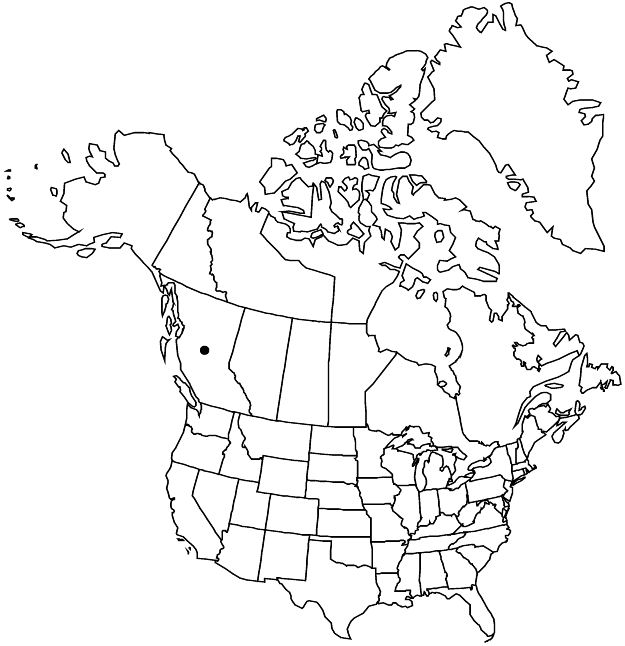Crataegus shuswapensis
Sida 20: 128, fig. 5. 2002.
Shrubs, 55 dm. Stems: 1-year old twigs tan to deep brown; thorns on twigs straight or slightly recurved, very dark brown young, 2–3 cm. Leaves: petiole 1.5–2.2 cm, pubescent, sparsely gland-dotted; blade rhombic, 5–7 cm, lobes 4 per side, sinuses deep, lobe apex acute, margins remotely serrate, venation craspedodromous, veins 4 or 5 per side, apex acute, abaxial surface glabrous, adaxial sparsely appressed-pubescent. Inflorescences 12–18-flowered; branches glabrous; bracteole margins glandular. Flowers 15 mm diam.; hypanthium glabrous; sepals triangular, 4–5 mm, margins minutely glandular; stamens 10–18, anthers pale to bright pink or puce; styles 3 or 4. Pomes brick red young, deep purple mature, somewhat glaucous, suborbicular to ± broadly ellipsoid, 12 mm diam., glabrous; sepals remnants patent-recurved, apex acute; pyrenes (3 or)4, sides plane to ± concave, grooved, or irregularly scarred. 2n = 68.
Phenology: Flowering May; fruiting Sep–Oct.
Habitat: Thickets, natural hedgerows, shade of riverine Populus
Elevation: 300–500 m
Discussion
Of conservation concern.
Crataegus shuswapensis is locally common near Enderby in the northern Okanagan and southwestern Shuswap drainage. Flowering plants from Lake County, Montana, are indistinguishable; fruiting plants from these populations have not been collected.
Crataegus shuswapensis is a distinctive member of ser. Douglasianae in the Okanagan because of its relatively long, stout thorns, large, wide, rhombic, and deeply and sharply incised leaf blades, pink, sometimes puce anthers, somewhat low style and pyrene numbers, and fairly large for the series, suborbicular to broadly ellipsoid purple fruit. Also, this species has a greater frequency of plane-sided pyrenes than has been noted in C. douglasii.
Crataegus shuswapensis is unusual in the genus for its unstable stamen number; in its other characteristics, it is more uniform. The majority of specimens that have been assigned to this species have about ten stamens; these are not dissimilar to an extreme form of C. douglasii that is locally common in northwest Montana and has been noted occasionally elsewhere. This latter variant of C. shuswapensis may be a single apomictic race.
Selected References
None.
